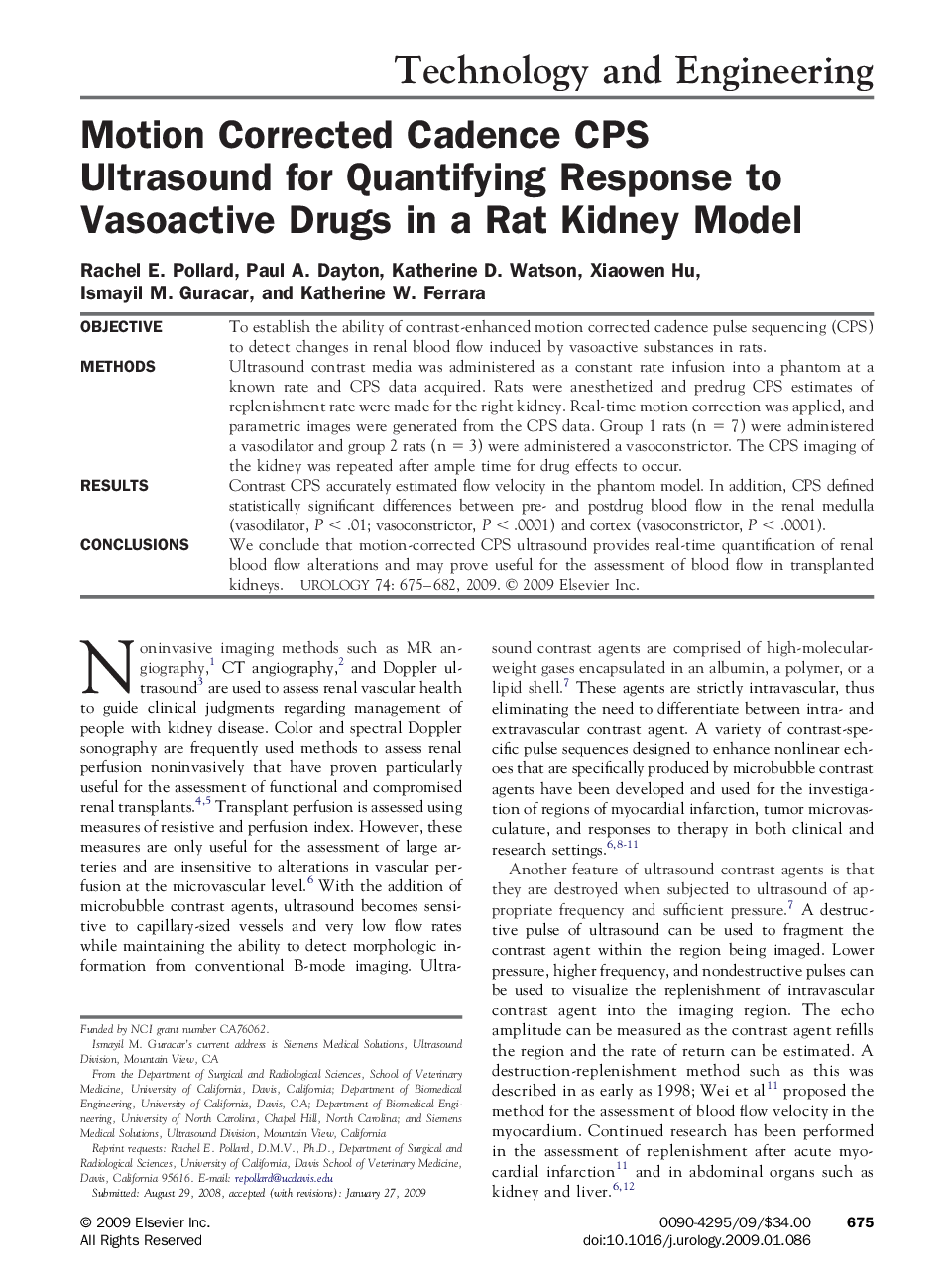| کد مقاله | کد نشریه | سال انتشار | مقاله انگلیسی | نسخه تمام متن |
|---|---|---|---|---|
| 3904088 | 1250386 | 2009 | 7 صفحه PDF | دانلود رایگان |

ObjectiveTo establish the ability of contrast-enhanced motion corrected cadence pulse sequencing (CPS) to detect changes in renal blood flow induced by vasoactive substances in rats.MethodsUltrasound contrast media was administered as a constant rate infusion into a phantom at a known rate and CPS data acquired. Rats were anesthetized and predrug CPS estimates of replenishment rate were made for the right kidney. Real-time motion correction was applied, and parametric images were generated from the CPS data. Group 1 rats (n = 7) were administered a vasodilator and group 2 rats (n = 3) were administered a vasoconstrictor. The CPS imaging of the kidney was repeated after ample time for drug effects to occur.ResultsContrast CPS accurately estimated flow velocity in the phantom model. In addition, CPS defined statistically significant differences between pre- and postdrug blood flow in the renal medulla (vasodilator, P < .01; vasoconstrictor, P < .0001) and cortex (vasoconstrictor, P < .0001).ConclusionsWe conclude that motion-corrected CPS ultrasound provides real-time quantification of renal blood flow alterations and may prove useful for the assessment of blood flow in transplanted kidneys.
Journal: Urology - Volume 74, Issue 3, September 2009, Pages 675–681